With its umami-rich jangs, zingy fermented vegetables and widespread affinity for seasonal produce, it was only a matter of time before Korean cuisine had its moment in the international spotlight. While diners have long lauded Korea for its contribution to the world of barbecued meats, increasing numbers of chefs around the globe are finding fresh ways to refocus the country’s incredible ingredients and traditions through a modern lens.
Meet nine of the prime players elevating Korean cuisine in our guide – then find even more culinary inspiration on 50 Best Discovery
Atomix, New York
104 E 30th St, New York, NY 10016
atomixnyc.com
@atomixnyc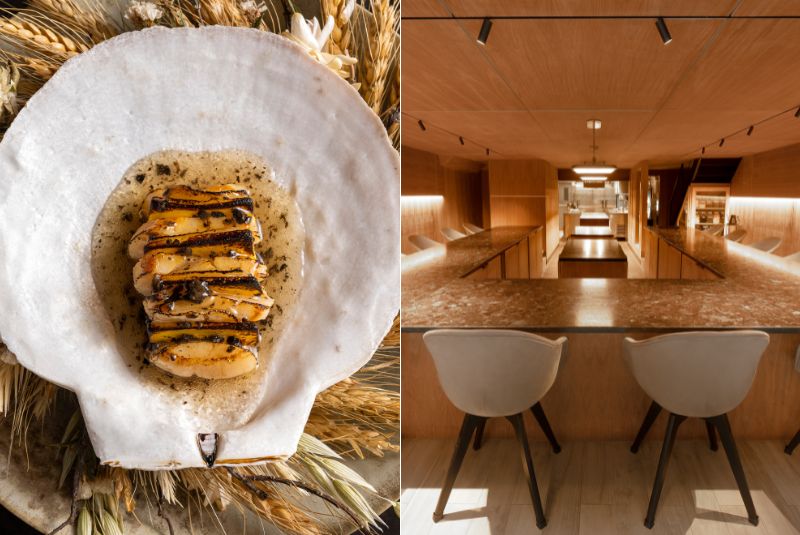
The follow-up effort to casual, minimalist Atoboy, this chic tasting menu boîte claims the basement of a Manhattan townhouse and is the brainchild of chef Junghyun ‘JP’ and wife Ellia Park. On the ground floor, guests pass through a lounge where the team offers a shorter nine-course food and beverage tasting menu for $270 USD, before descending one level down into a modern, minimalist room outfitted with a horseshoe-shaped black marble counter.
Each evening, 14 guests per seating embark on a 14-course, $395 USD tasting menu rooted in contemporary Korean cuisine accented with global inspiration. Unique approaches to highlighting fermentation form a common thread throughout the menu; there’s a kohlrabi course in which the vegetable is coated in a salt and nuruk shell and aged for three days before baking, while roasted butterfish is blanketed in a sauce made from white kimchi and heavy cream. Atomix’s global ascent has been such that it was recently voted into the top ten of The World’s 50 Best Restaurants.
Image: Evan Sung
Komah, São Paulo
R. Cônego Vicente Miguel Marino 378, Barra Funda, São Paulo 01135-020
komahrestaurante.com.br
@komahrestaurante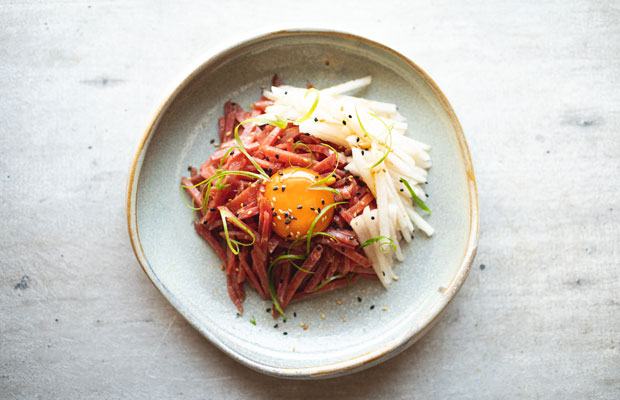
While São Paulo might not be best known for Korean cuisine, there’s one restaurant that’s not only putting it on the map for locals, but drawing in diners from around the world. Having clocked in hours at globally renowned eateries like D.O.M., chef Daniel Park helms the casual 50-seat Komah with its five-course, R $115 jang-forward bill of fare, which embraces classic Korean ferments such as ganjang (soy sauce), doenjang (fermented soybean paste) and gochujang (fermented chili paste). With an à la carte menu also available, expect to find global influences throughout the flavour-forward dishes, like in the kimchi bokumbap. A dish traditionally made from fried rice and kimchi served with an omelette, in this case the chefs prep the rice as if it were paella and make a custardy omelette using the French technique of baveuse.
Image: Juliana Corsi
Koan, Copenhagen
Langeliniekaj 5, 2100 Copenhagen
koancph.dk
@koancph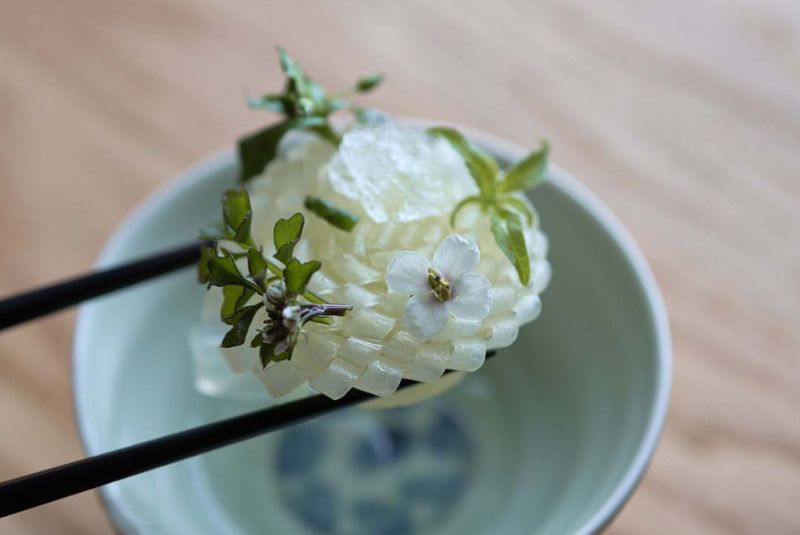
“For the past seven years, curiosity about my birth country, South Korea, has grown stronger,” asserts Kristian Baumann, whose desire to explore his roots has manifested in freshly minted Koan, Copenhagen’s only Korean tasting menu haunt. Inspired by his own deep dive into Korean culture and traditions, the former executive chef of the city’s acclaimed 108 – a sister restaurant to globally-renowned Noma – launched Koan as a pop-up prior to landing its current brick-and-mortar space within a historic waterfront building at Langeliniekaj port.
Baumann is wedded to traditional Korean flavours and techniques shaped with seasonal Nordic ingredients and a minimalist eye. 23 guests per evening embark on his refined, 17-course tasting menu priced at 2500 DKK, with dishes like rice flake-encrusted langoustine with salted green strawberry and a sauce made from makgeolli (alcoholic fermented rice wine), and kohlrabi plus white kimchi laced with elderflower oil and wasabi flowers.
Image: Neve Qaraday
Meta, Singapore
1 Keong Saik Rd., Singapore 089109
metarestaurant.sg
@metasingapore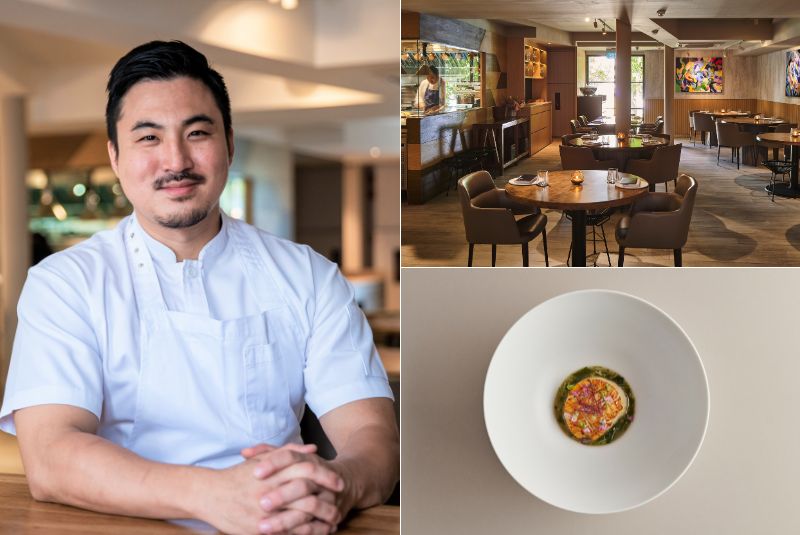
Korean-born chef Sun Kim is at the helm of Meta – short for metamorphosis – where he unites past learnings about Japanese cuisine (under Australian-Japanese chef Tetsuya Wakuda) with his own heritage. Kim’s minimalist dishes echo Japanese simplicity, mirrored in his clean and modern 30-seat dining room, but his real goal is to bring Korean cuisine from the past to the future. At Meta, fermentation and flavour are the core of his seven-course, $298 SGD tasting menu, which highlights Kim’s twist on traditional Korean dishes, like fortifying miyeok-guk, a traditional seaweed soup, with scallop in place of beef, and serving kimchi made from kale.
After being named American Express One To Watch at Asia’s 50 Best Restaurants in 2021, Meta graduated to the full Asia ranking and now sits at No.17 in the continent’s culinary hierarchy.
Bōm, New York
17 W 19th St, New York, NY 10011
bom-nyc.com
@bom_nyc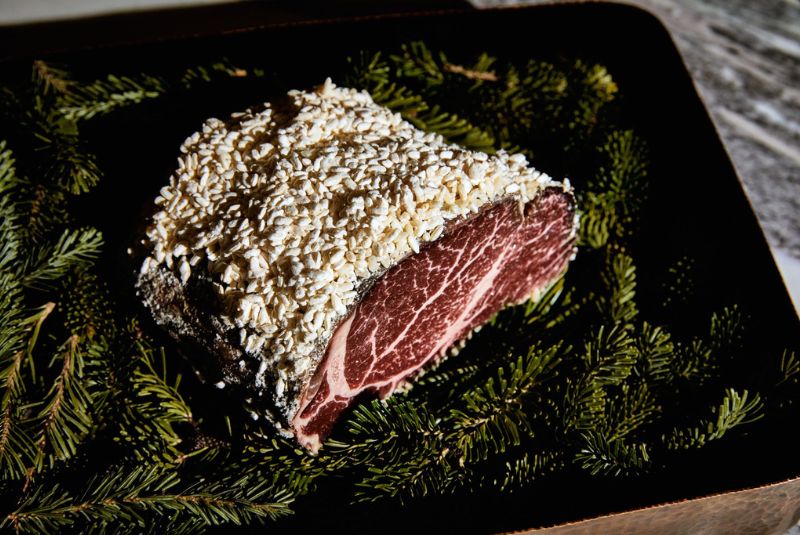
Manhattan’s newest tasting menu engagement takes shape as 18-seat Bōm, the beef-based, Korean ingredient-laced dinner experience housed within chef Brian Kim and managing partner Maximilian Soh’s Michelin-starred Oiji Mi – itself a slightly more unbuttoned yet elegant set-menu Korean eatery. Walk through the dining room and behind a closed door sits a spacious U-shaped counter inlaid with gas-fuelled grills; at the centre you will find a gaggle of chefs quietly and methodically building compact bowls of chojang-cured sea bream atop a tangle of gamtae (seaweed) noodles, and positioning caviar on dry aged sirloin.
Offering Kim’s modern perspective on classic Korean cuisine, the 12-course, $325 USD menu spans lighter to heavier dishes, with a series of four plates all dedicated to beef. One preparation involves aging tenderloin in nuruk, a wheat-and rice-based starter culture used to produce Korean alcoholic beverages such as soju; another involves diced wagyu galbi atop aged kimchi and steamed white rice.
Hansik Goo, Hong Kong
1/F, The Wellington, 198 Wellington St, Sheung Wan, Hong Kong
hansikgoo.hk
@hansikgoo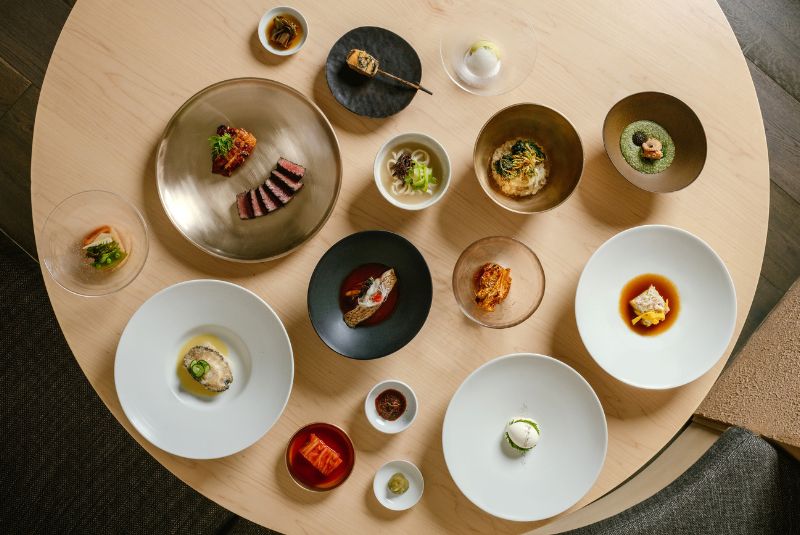
One of Seoul’s most renowned culinary innovators, chef Mingoo Kang of Mingles took a risk by expanding beyond his home country during the pandemic to launch his inaugural overseas venture in Hong Kong, Hansik Goo. Whereas Mingles excels at a technique-driven, modern approach to Korean cuisine, 60-seat Hansik Goo instead focuses on “authenticity and traditionalism” via a seasonal nine-course menu priced at $1398 HKD.
The chef notes that here “flavours are straightforward and served with minimal presentation”, like a dish served earlier this year: a play on tteokuk, a traditional rice cake soup believed to bring good fortune, studded with beef and beef tendon-stuffed dumplings. But as a fresh season rolls in, the latest menu iteration highlights Korean spring greens, so expect to find produce like dureup (angelica tree shoots), sugar snap peas, and imported Daejeo tomatoes woven into a starter called Spring Bites.
Nae:Um, Singapore
161 Telok Ayer St, Singapore 068615
naeum.sg
@naeum.sg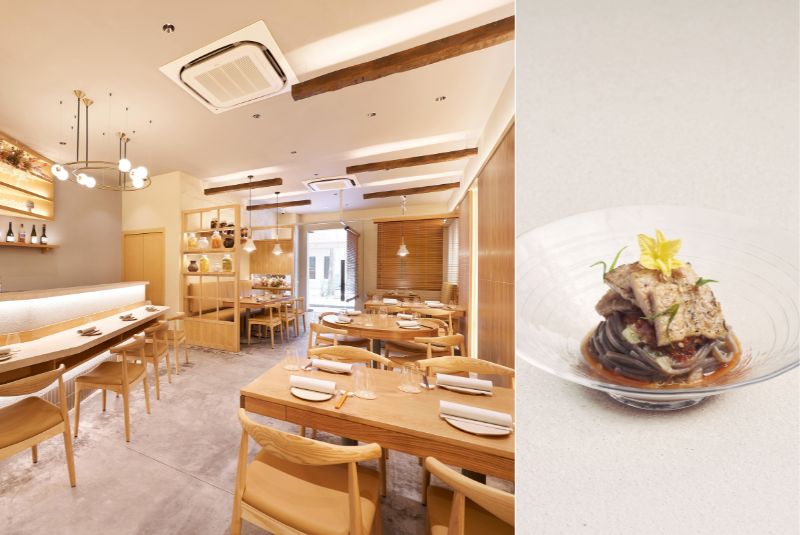
With its blonde wood and cream-coloured backdrop, Singapore’s Nae:Um – the two-year-old restaurant that Korean-born chef Louis Han debuted during the pandemic – welcomes diners to its home dining room-inspired, 28-seat space. Offering what Han describes as “contemporary Seoul cuisine focused on Korean flavours shaped with French technique”, the chef serves “episodic” menus that rotate roughly every six months. These nostalgic meals derive inspiration from Han’s experiences growing up, and he puts his memories on the plate, bringing them to life through the season’s best ingredients.
Past menus centre around visiting the mountains of southern Seoul and a road trip to the East Sea, but his current offer strives to tell the story of the outdoor barbecues he once hosted for friends as a young cook. On the plate that manifests as a six or eight-course feast priced at $198 SGD and $258 SGD respectively, with binchotan-grilled wagyu tenderloin beside pickled sweet potato leaf, and black barbecued pork ribs served with black truffle-anointed multi-grain rice. Fermented ingredients are a staple of any classic Korean barbecue, so Han adds his signature kimchi to a somyeon (cold noodle) dish, served alongside a lime and plum chung fizz, a fermented drink commonly made in Korean households.
Benu, San Francisco
22 Hawthorne St, San Francisco, CA 94105
benusf.com
@benu_sf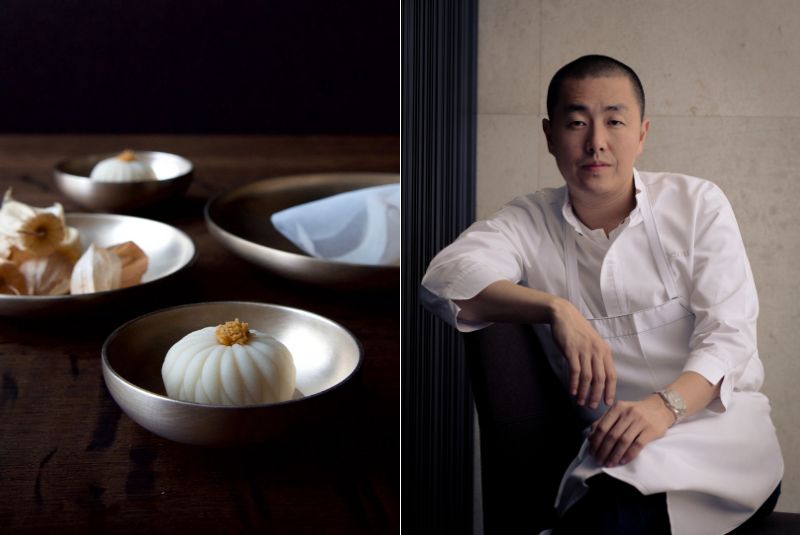
One of the most inspired and delicious menus in the US, Korean-American chef Corey Lee helms three-Michelin-starred, former World’s 50 Bester Benu, the Bay Area’s fine-dining fixture that weaves Asian flavours with French technique. Here, one will note a particular focus on Korean ingredients, like dried anchovies and salted shrimp, alongside traditional Korean practices including meat braised in pear and preserved persimmons.
The 14-course, $375 USD menu is “focused on the pursuit of finding new flavours and [ingredient] combinations”, explains Lee, like creating a non-delicate pairing for caviar, which ultimately led to matching the luxury roe with an unexpected ingredient: chilli oil. The chef adds that his plates “almost always have a reference to something traditional”, like his standout lobster coral xiao long bao: plump soup dumpling so filled with lobster meat and consommé that they resemble small, crimped water balloons, barely held together by the paper-thin skin.
Jung Sung, Sydney
Level 3/2-10 Kensington St, Chippendale, Sydney, NSW 2008
jungsung.com.au
@jungsungrestaurant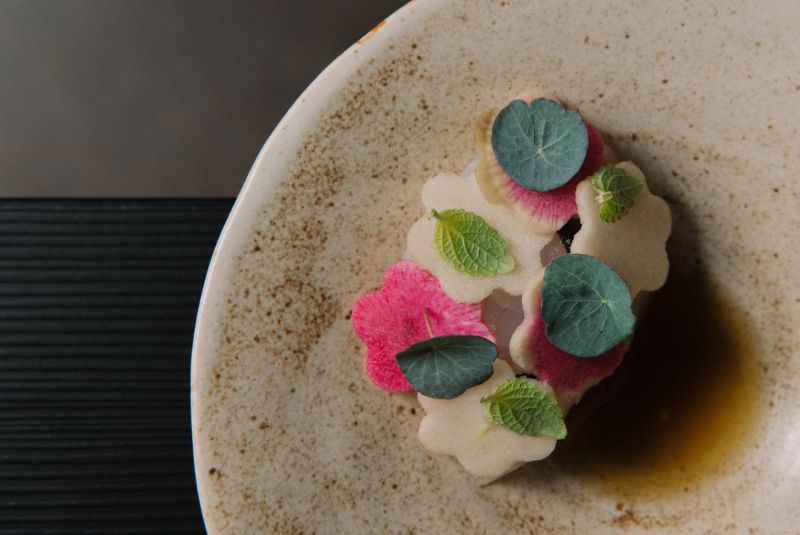
House-made ferments are at the heart of Sydney’s Jung Sung, the two-year-old contemporary Aussie-Korean hybrid from chef Insup Kim overlooking the Inner West skyline. Within its grey-hued, 32-seat dining room, vibrant plates laced with house-pressed sesame oil and Australian soybean-based gochujang pop with flavour.
“Most inspiration comes from my childhood memories in Korea,” explains Kim, referencing dishes like his take on bibimbap made with two-day soy-marinated Moreton Bay bugs, puffed quinoa and buckwheat, plus poached eggs and micro-chives blanketed in steamed rice seasoned with more soy sauce, butter and seaweed.
Image: Jiwon Kim
Use our city guides and consult the 50 Best Discovery gastronomic search engine for thousands more restaurant and bar recommendations across the world. Start planning your next adventure today…

